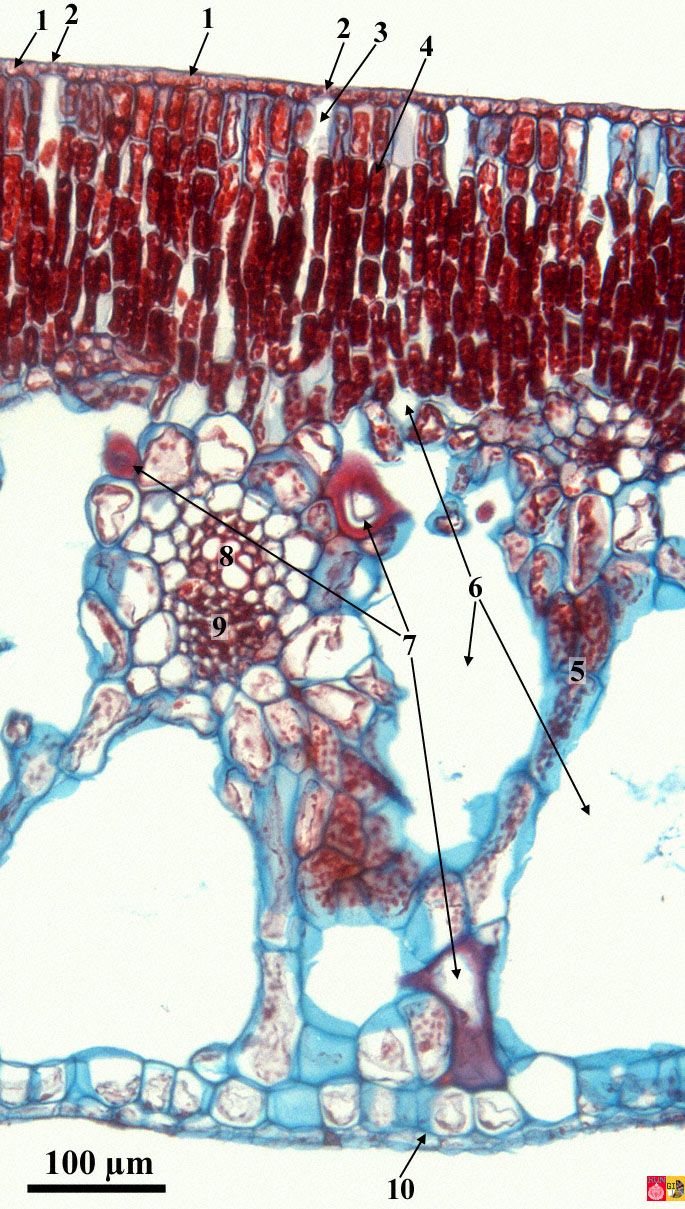Back to Medium sized version | Without labels
Detail of a cross-section through a leaf of water lily (example of a water plant)

Legend:
1 upper epidermis
3 intercellular space below stomata
4 palisade parenchyma
5 spongy parenchyma
7 sclereids
8 xylem
9 phloem
2 stomata
6 air cavities
10 lower epidermis
English name: Water lily
Scientific name: Nymphaea sp.
Familia: Nymphaeaceae
Classis: Dicotyledonas
Phylum: Angiospermae
Regnum: Plantae
The leaves of the water lily float thanks to the large intercellular air cavities present in the chlorenchyma layer. The exposure of the leaves to light is optimal and also the streaming of water through the plant (from the base to the cavities and the stomata) is well regulated. In contrast to most terrestrial species the stomata of this water plant are exclusively located on the upper side (the abaxial side) of the leaf, where they are in direct contact with the air. The availability of plenty of light energy and water, the presence of a multilayered palisade parenchyma with abundant chloroplasts (stained red in this preparation), together result in a high photosynthetic activity. Sclereids can be found in the air cavities. These spiky fiber-like cells provide mechanical support, but also make the leaf less attractive to noxious visitors like leaf-eating insects.







